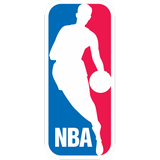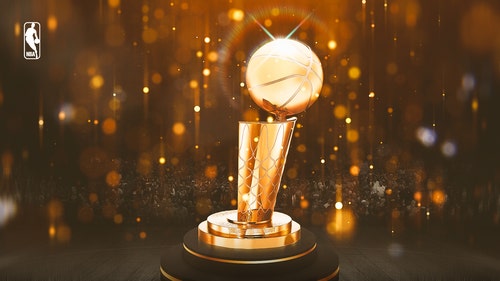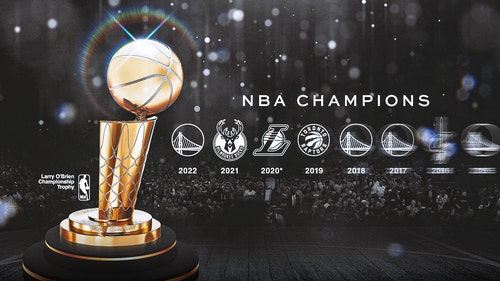
Mayor today, gone tomorrow: Why college basketball is fleeting
College basketball has a problem. This problem has nothing to do with the 35-second shot clock, or the often-plodding pace of play, or the inconsistent refereeing of physical perimeter defense, though I would agree that those, too, are all pretty big issues for the college game. This problem is related to the troubles brought on by the NBA’s one-and-done rule, but the one-and-done rule touches only the tip of this much bigger issue.
It is endemic to the very existence of college basketball in this day and age and more than anything else may get to the heart of what supposedly ails the sport. Unlike the other problems that can be solved with rule tweaks and changes of mindset, there’s no solution. Not now. And probably not ever.
College hoops’ biggest problem is this: Now more than ever, it has become America’s most fleeting sport. Championship windows open and close in the blink of an eye, players you fall in love with over the course of a winter are off to the NBA by spring, and coaches who feel like the perfect fit to stay at a school forever decide to move on – even when you couldn’t script better reasons for those coaches to root themselves to their schools.
I am reminded of college basketball’s fleeting nature this week as Iowa State head coach Fred Hoiberg heads to Chicago to become the next Bulls head coach.
This news is sad. At least, it’s sad for people like me, as a fan of the college game more than the NBA game, as a decade-long Iowan, as a person with strong family ties to Iowa State and a strong admiration for Hoiberg.
This news is also inevitable. After all, when Hoiberg was hired in 2010 – a move many called a mistake, since he had never before coached at any level – Hoiberg told Iowa State athletic director Jamie Pollard that his dream was to coach in the NBA.
Then Hoiberg proceeded to take a program fresh off four straight losing seasons to four NCAA tournament appearances in his five years in Ames. He did it with a fast-paced offense that looked suspiciously like an NBA team’s. During that remarkable run, Iowa State fans got big dreams in their heads. They truly believed Hoiberg would become the Coach K of Iowa State, morphing from the Mayor of Ames into the King of the Cyclones.
In a fairy tale sort of way, that way of thinking made sense. Hoiberg grew up in Ames idolizing Iowa State athletes. He grew up just blocks from Hilton Coliseum. He was a ball boy for the Cyclone basketball team in the 1980s, and part of his legend came from the moment when he tripped up then-Iowa State star Jeff Hornacek at an exhibition game and sprained Hornacek’s ankle. Hoiberg starred for four years at Iowa State before getting drafted into the NBA – yes, that actually used to happen – and when he became Iowa State’s new head coach, his retired number was already hanging from the rafters.
Heading into the 2015-16 season, the storybook ending appeared well within reach. Through transfers and keen recruiting, Hoiberg and his staff had built Iowa State into a Big 12 juggernaut, a group that felt capable of taking Iowa State to its first Final Four since World War II.
And now that part of the Fred Hoiberg story is over.
If a guy like Hoiberg – whose marriage to Iowa State was once described to me by former Iowa State (and former Chicago Bulls) head coach Tim Floyd as “the most unique relationship in all of coaching” – wouldn’t stay put in the college game, who would?
For those of us who love college basketball, this is a depressing thought. And yet it’s a thought that, in some shape or form, keeps coloring the way we view our favorite sport.
It’s all part of the sport’s overarching problem, how nothing in the world of college basketball has anything close to a feeling of permanence.
For example, look at the transfer system. Each year, a new record is set for the number of players transferring to a new school. You’re a Texas Longhorns fan a few years back, excited about the potential of freshman guard Sterling Gibbs? Sorry – he transferred to Seton Hall. You’re a Seton Hall fan who couldn’t wait for Gibbs’ senior season this coming fall after his breakout junior year? Whoops – Gibbs is heading to UConn next season as a graduate transfer.
The same fleeting nature can be seen in how the one-and-done rule has affected the rosters of blueblood programs. You fell in love with the Duke team that just won the title, those big personalities and bigger talents like Jahlil Okafor and Justise Winslow and Tyus Jones? Hope you enjoyed it to the hilt last season because Duke will have close to an entirely new roster come November.
It’s as curmudgeonly as it is pointless for college hoops fans to complain about the one-and-done rule. Maybe it’ll change to a two-and-done rule, but that’s a tweak more than a solution. First of all, it’s a rule that’s determined by the NBA. More important, we’ll never get back to the age of the four-year superstar.
We don’t live in that age anymore. We may never have another Kenyon Martin, the last college senior to be selected No. 1 overall in the NBA Draft. Look at DraftExpress.com, whose mock drafts are considered the most accurate. It has exactly one college senior, Wisconsin’s Frank Kaminsky, going in the lottery, and only two others, Notre Dame’s Jerian Grant and Utah’s Delon Wright, being selected in the first round. Kaminsky jokes that being a 22-year-old in the NBA Draft is equivalent to being 65 in regular life.
Meanwhile, 13 freshmen are projected to go in the first round.
As soon as you fall in love with an elite player, he’s off to the NBA. Ditto for an elite coach. Before this season, I wrote that Florida coach Billy Donovan was, as he entered his 19th season in Gainesville, primed to take Coach K’s mantle as the most respected ambassador of the college game. I honestly believed he had the grounded, wise personality that would tie him to Gainesville for life, the type of thinking that says, “You don’t mess with happy.”
Now he’s the new coach of the Oklahoma City Thunder. I’d nominate Kansas’ Bill Self or Arizona’s Sean Miller as the next face of the college game, but who knows how long either of them will stay.
Truth is, we may never have another Coach K.
I don’t blame coaches like Hoiberg or Donovan who leave a seemingly perfect situation in college in favor of the NBA. Coaching in the NBA is truly about coaching basketball, not about all the extra noise: There’s no arduous recruiting trail, no worries about keeping players academically eligible, no constant roster turnover, no restrictions of amateurism. All that noise is gone when you sign on the dotted line.
None of this is a revelation. For the best players and the best coaches, college basketball has always been a steppingstone to something else. I don’t begrudge Hoiberg for chasing his dream of becoming an NBA coach. Nor do I begrudge Okafor for chasing his dream of becoming an NBA player, or Gibbs for transferring to a school that he feels is a better fit. As a college basketball fan, it makes me sad, but I’d do the same thing if I were in their shoes.
Sadly, there’s no solution to this problem for college basketball. It’s always been a fleeting sport, it’s just that it’s only becoming more so. I suppose this is just a lamentation: That the best of the best linger for less time on the college hoops’ steppingstone than ever before, and that there’s absolutely nothing to be done about it other than changing our own expectations of what today’s college basketball really is.
Email Reid Forgrave at reidforgrave@gmail.com, or follow him on Twitter @reidforgrave.








